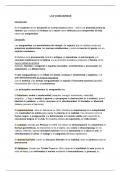Summary
Summary Control systems
- Course
- Institution
A summary of TOPIC 9 Biology B edexcel course, including the kidney and thermoregulation. The notes are written from the spec point, with a full explanation under the heading. This document got me an A* so I recommend!
[Show more]








